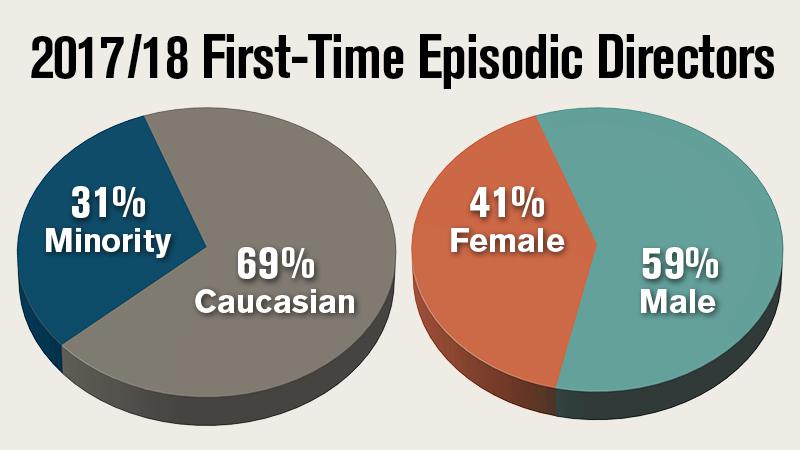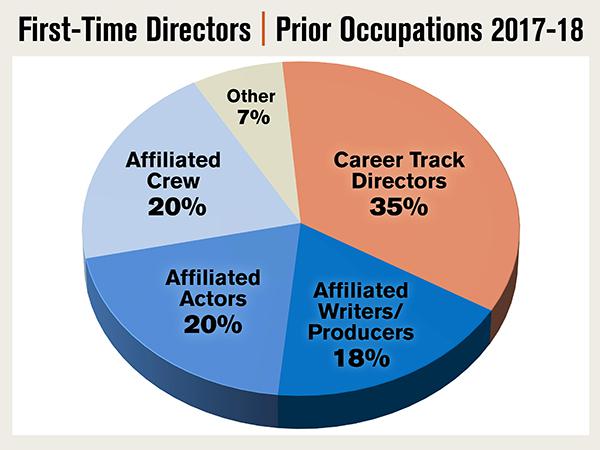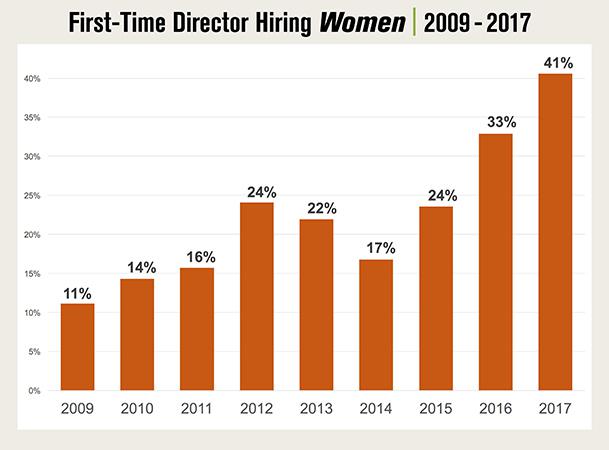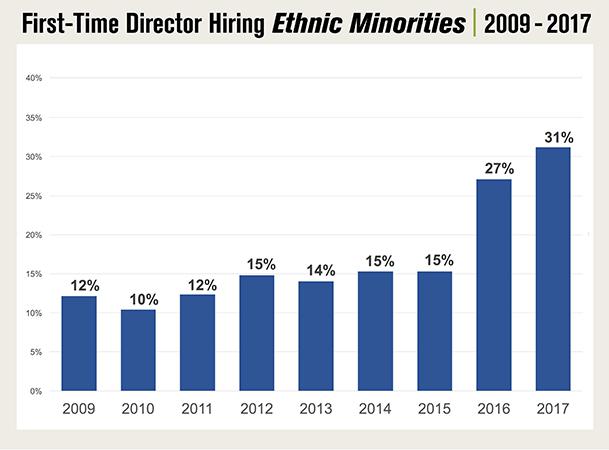TV directors in the 2017-18 TV season were the most diverse since the Directors Guild of America started tracking this statistic nearly a decade ago, the DGA said Thursday.
In a study released Thursday, the DGA found that the percentages of episodic TV jobs going to first-time women and people of color hit record highs for the second straight year.
Among the highlights:
— 31 percent (63) of first-time hires in the 2017/18 season were directors of color. That is an increase from 27 percent in the 2016/17 season, and from 12 percent in 2009/10.
— 41 percent (82) of first-time hires were women. That’s up 33 percent from the prior season, and from 11 percent in the 2009/10 season.
— 13 percent (27) of first-time hires were women of color. That’s an increase from 9 percent last season, and from 2 percent in the 2009/10 season.
“True inclusion is not just a single hire or a line in a speech, it’s a commitment that must be exercised through ongoing action, day by day,” said DGA President Thomas Schlamme in a statement.
“The hiring improvements covered in this report show an industry that’s headed in the right direction today, but also one with a long road ahead to keep up with the increasingly diverse world tomorrow. What our study tells us is that there’s no shortage of talented women directors and directors of color ready for a first break. But for each hire to truly have an impact on the future, the studios and networks that make the hiring decisions need to open the doors even wider and discover a more inclusive population of candidates who seek directing as a career.”
While the numbers have improved, the DGA also said that “the study shows that while some actors, writers and others connected to a series do pursue directing after a first-break opportunity, the vast majority do not. The ongoing employer practice of ‘gifting’ out directing jobs to these series-connected individuals who do not go on to pursue a career as a director has a damaging effect on new and established directors alike. The practice acts as a bottleneck to the pipeline, limiting first breaks for diverse directors.”
In all, some 202 directors who had never before directed episodic television were hired by studios, networks, and executive producers in the 2017/18 season—a decrease from last season’s all-time high of 225, but higher than all the other seasons covered since 2009.
Of those 202 first-time directors, 117 (58 percent) were “series affiliated,” meaning they were already connected with the series for which they were hired as a writer/producer, actor or crew member. Just 70 (35 percent) were “career-track directors,” meaning they had prior directing experience and were either unaffiliated with the series or their affiliation was the result of their prior directing experience.
Over the long term looking at 775 first-time directors initially hired in past seasons (between 2009/10 – 2015/16), the guild found that those who were series affiliated were much less likely to direct in the future.
Only 24 percent of series-affiliated first-time directors went on to direct shows they were not affiliated with in any capacity – a meaningful sign that they plan to develop TV-directing careers. Taking it a step further, series affiliated actors and series affiliated writer/producers were the least likely to go on and direct on other unaffiliated shows. By contrast, 71 percent of the career-track directors were subsequently hired to direct on other series.
The long-term analysis also found that series affiliated directors, as a group, were less diverse. Women directors and directors of color comprised 25 percent of the series-affiliated group, compared with 38 percent in the career-track group.
The most successful first-time directors were career-track women with 88 percent going on to direct other series. Career-track directors of color also did exceptionally well with 76 percent moving on. On the other hand, just 18 percent of series-affiliated male Caucasians continued with directing on series they were not affiliated with in another capacity.
The DGA has been pressing studios, networks and producers to be more inclusive in hiring for nearly four decades. Its efforts include collective bargaining gains requiring television studios to operate TV director diversity programs, and all first-time TV directors to attend a DGA orientation; ongoing meetings with studios, networks and individual series regarding their hiring records; and publicized reports detailing employer hiring patterns. In addition, the Guild itself has operated numerous TV director mentorship and educational programs to support the career development of its members.
“It seems rather clear: to bring real systemic change for the future—and not just stats from season to season—employers must give even more first opportunities to talented diverse voices committed to a career in directing,” said Schlamme. “It’s not just the right thing to do, it is vitally important to keep our industry growing, changing and innovating.”
[Cube image courtesy of The Hollywood Reporter; slides courtesy of Directors Guild of America]
Tags: dga













































__twocolumncontent.jpg)















